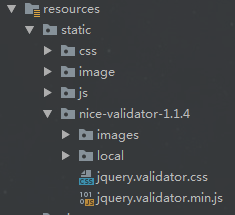前言
前几天一个朋友在微信里面问我一个关于 JS 数组排序的问题。通过该问题发现了一些之前没发现的内容,下面话不多少了,来一起看看详细的介绍吧。
原始数组如下:
data 是个数组,数组的每一项都是一个拥有 value 作为 key 的对象,值为数字或者 undefined。
对数组的 value 进行排序,然后把排完序的数组进行 flat 处理。得到的结果如下:
显然这没有达到我们的目的。
现在我们修改一下排序,挑战一下函数的调用顺序:先对数组进行扁平化(flat)处理,然后再排序。
这时我们得到的结果和之前截然不同:
遇到这种情况第一感觉肯定是要去看看 ECMA 规范,万一是 JS 引擎的 bug 呢。
在 ES6 规范 nofollow" target="_blank" href="http://www.ecma-international.org/ecma-262/6.0/#sec-array.prototype.sort">22.1.3.24 节写道:
Calling comparefn(a,b) always returns the same value v when given a specific pair of values a and b as its two arguments. Furthermore,Type(v) is Number,and v is not NaN. Note that this implies that exactly one of a < b,a = b,and a > b will be true for a given pair of a and b.
简单翻译一下就是:第二个参数 comparefn 返回一个数字,并且不是 NaN。一个注意事项是,对于参与比较的两个数 a 小于 b、a 等于 b、a 大于 b 这三种情况必须有一个为 true。
所以严格意义上来说,这段代码是有 bug 的,因为比较的结果出现了 NaN。
在 MDN 文档上还有一个细节:
如果 comparefn(a,b) 等于 0, a 和 b 的相对位置不变。备注:ECMAScript 标准并不保证这一行为,而且也不是所有浏览器都会遵守。
翻译成编程术语就是:sort 排序算法是不稳定排序。
其实我们最疑惑的问题上,上面两行代码为什么会输出不同的结果。我们只能通过查看 V8 源码去找答案了。
V8 对数组排序是这样进行的:
如果没有定义 comparefn 参数,则生成一个(高能预警,有坑啊):
然后定义了一个插入排序算法:
为什么是插入排序?V8 为了性能考虑,当数组元素个数少于 10 个时,使用插入排序;大于 10 个时使用快速排序。
函数都定义完成后,开始正式的排序操作:
if (num_non_undefined == -1) {
// There were indexed accessors in the array.
// Move array holes and undefineds to the end using a Javascript function
// that is safe in the presence of accessors.
num_non_undefined = SafeRemoveArrayHoles(array);
}
中间的注释:Move array holes and undefineds to the end using a Javascript function。排序之前会把数组里面的 undefined 移动到最后。因此第二个排序算法会把 undefined 移动到最后,然后对剩余的数据 [4,4] 进行排序。
而在第一种写法时,数组的每一项都是一个 Object,然后最 Object 调用 x.value - y.value 进行计算,当 undefined 参与运算时比较的结果是 NaN。
当返回 NaN 时 V8 怎么处理的呢?我前面标注过,再贴一次:
NaN > 0 为 false,执行了 else 分支代码。
思考题,以下代码的结果:
总结
以上就是这篇文章的全部内容了,希望本文的内容对大家的学习或者工作能带来一定的帮助,如果有疑问大家可以留言交流,谢谢大家对编程之家的支持。






